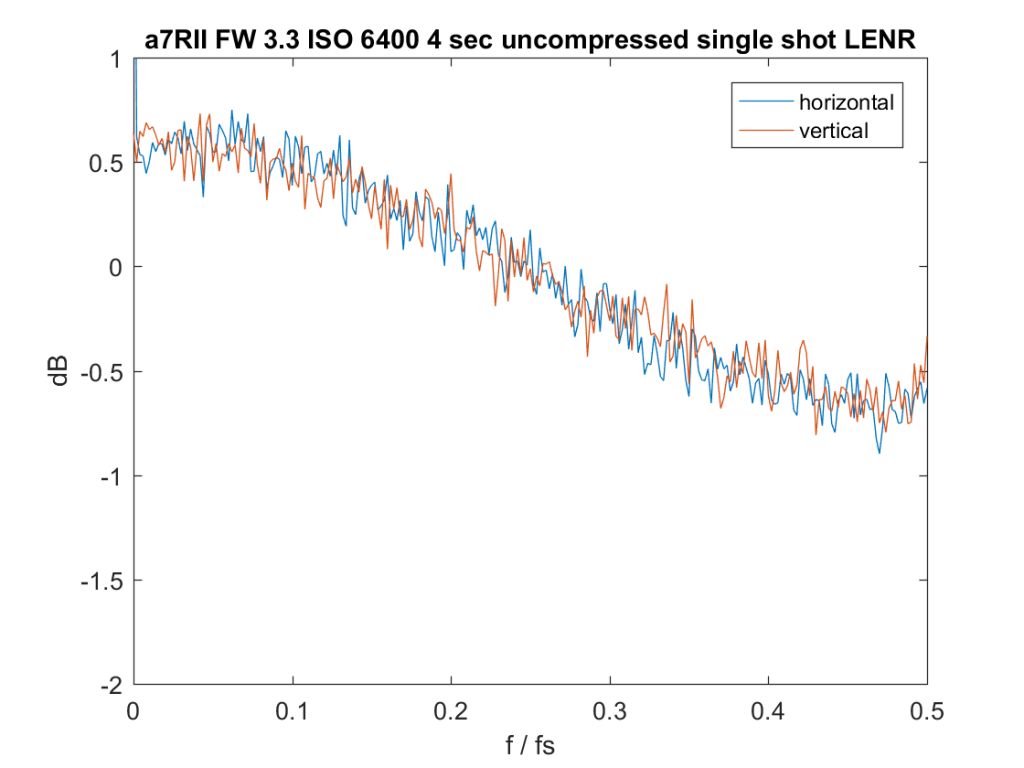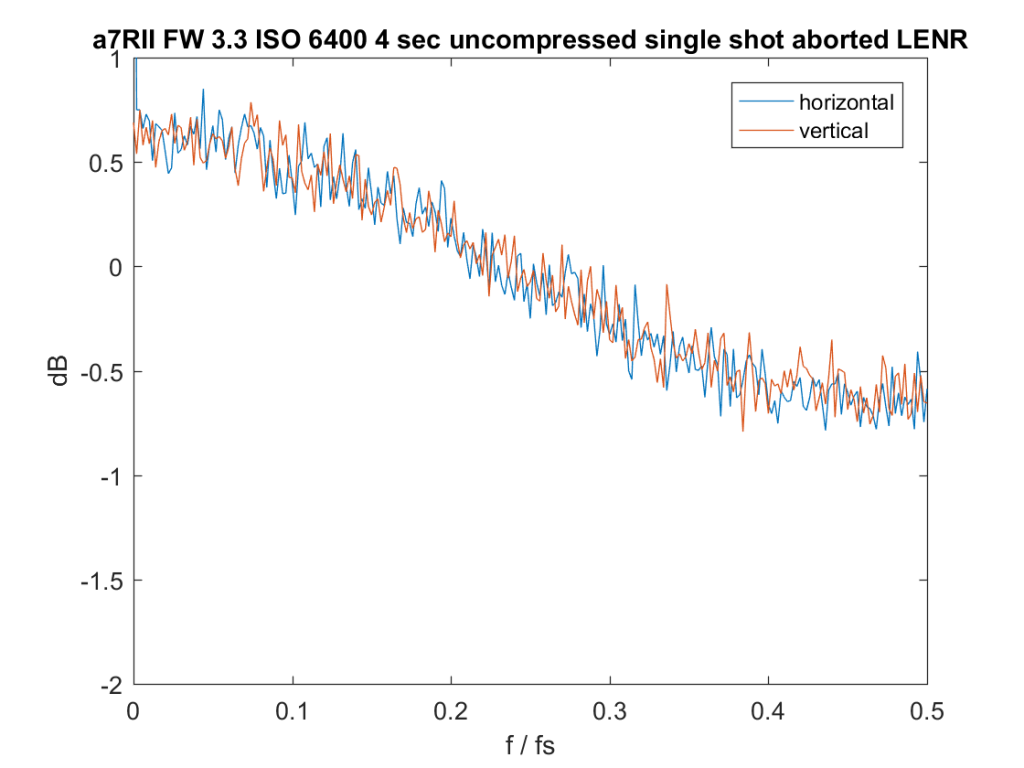We have seen here and here that the Sony a7RII running firmware 3.30 spatially filters raw images prior to writing them to the flash card at shutter speeds slower than 3.2 seconds.
There has been an Internet report that some Nikons did something similar, but that they could be tricked into not doing it by invoking long exposure noise reduction (LENR), and shutting down the camera during the dark-field exposure that takes place after the one of the scene. Apparently, the camera then wrote the first image to the flash card with no spatial filtering. I cannot vouch for the truth of either the Nikon’s behavior or the workaround.
Could something similar trick the Sony camera into deep-sixing the spatial filtering?
I tried it with timed 4 second exposures.
First, with LENR on, and allowed to complete its cycle:
Next, with LENR on, but the camera shut down in the middle of the second exposure:
Well, it was worth a try.


[…] http://blog.kasson.com/the-last-word/spacial-filtering-of-raw-images-by-sony-a7s-a7ii/ http://blog.kasson.com/the-last-word/sony-a7rii-long-exposure-spatial-filtering-with-fw-3-30/ http://blog.kasson.com/the-last-word/16486/ http://blog.kasson.com/the-last-word/lenr-and-sony-a7rii-fw-3-30-lowpass-filteering/ http://blog.kasson.com/the-last-word/reverse-engineering-the-sony-a7rii-long-exposure-spatial-filtering/ http://blog.kasson.com/the-last-word/sony-a7rii-bulb-spatial-filtering/ […]